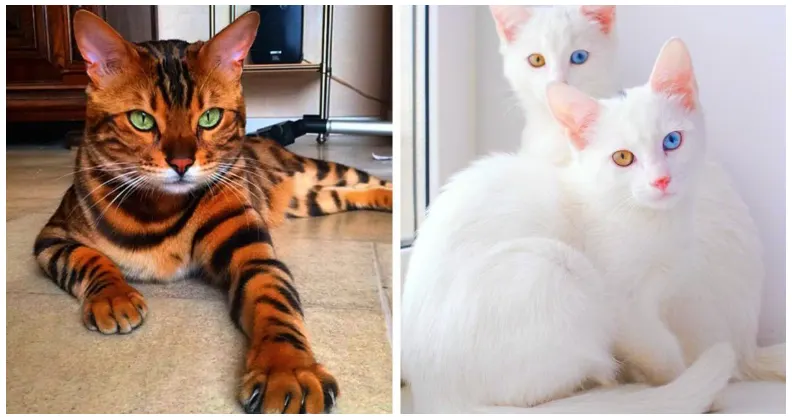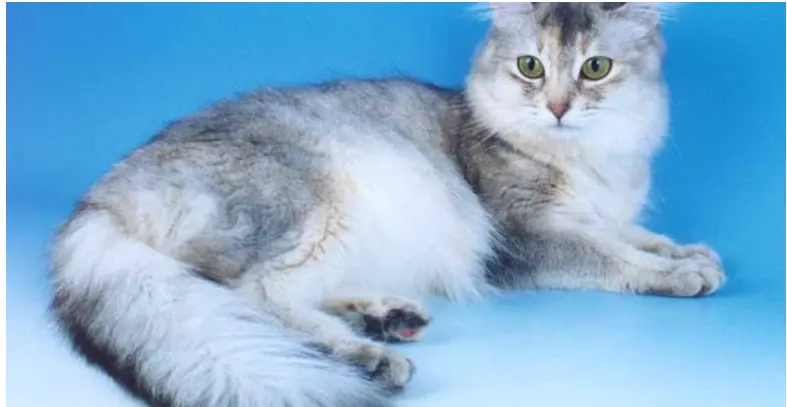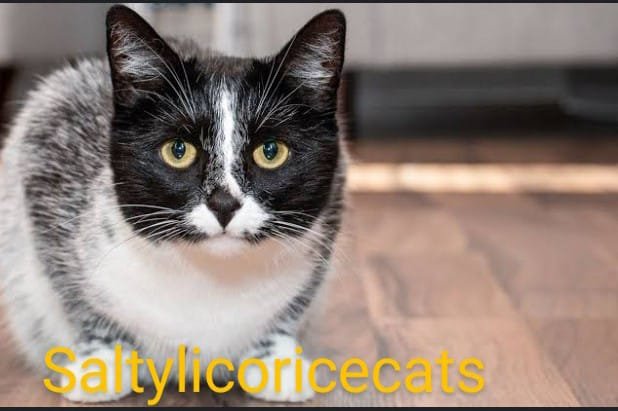Exotic Cats You’ve Probably Never Heard Of
Uncommon feline types are those whose traits and behaviours are rare or atypical. Such cats are often known for their unique features. They set them apart from ordinary breeds.
Are you fond of uncommon types of cats? It is a rare cat. It has unique appealing looks and features that no other cat has!
Many don’t realize there are many intriguing types of felines. These Asian felines come from various parts of the world. They have specific characteristics that identify them.
Rare Cats: A Guide to the Most Uncommon Feline Breeds

The intriguing felines are fascinating. They have various traits and social traits. Such intriguing cat breeds are additionally normally difficult to track down. Also, many have special rare traits: wavy furs, unusual colours and more. Each rare variety has a unique history and traits. This makes it exceptional in the cat world.
From the smooth Egyptian Mau to the wavy-haired Selkirk Rex, these felines have gotten the attention of feline sweethearts all over. If you’re searching for a feline that is not normal, attempt the captivating groupings. They offer something novel and fortifying!
Rare Cat Breeds: Fascinating Facts About Exotic Cats
The Origins of Rare Cat Breeds
Many strange cat breeds have interesting origins. They often link to specific places or historical events. A few breeds similar to the Siamese are very old. Others are somewhat new.
Unique Physical Traits of Exotic Cats
Uncommon cat breeds often have striking features. These include unusual coat patterns, eye colours, and ear shapes. These traits make them different from normal cats. They are unique.
Temperament and Personality of Rare Breeds
Extraordinary felines aren’t only known for their looks, they frequently have particular personalities. A few interesting varieties are profoundly dynamic and social, while others are quiet and independent.
Unique Cats: What Makes These Rare Breeds So Special?
- Distinctive Physical Features: Many interesting cats have unusual coat colours, patterns or textures. They are different from normal breeds.
- Cultural Significance: A few rare types have deep historical or cultural roots. This adds to their charm.
- Genetic diversity: Extraordinary feline varieties have many genes. This can lead to unique health traits.
- Personality traits: Intriguing felines often have specific characteristics. They can be energetic and social or quiet and reserved.
- Rarity and Exclusivity: Cat fans and collectors find these rare breeds more alluring.
- Breeding Challenges: Many rare unique varieties are hard to raise. This adds to their appeal.
- Adaptability: Some interesting varieties can adjust to various conditions. They are flexible companions.
Cool Cat Species: The Most Unusual and Rare Breeds
Some of the most unique and fascinating breeds of cats in the world are the cool cat species. These felines usually have exotic features. They may have odd fur patterns or quirky body shapes. Take the Sphinx which is known for its lack of hair, or the Maine Coon which has bushy parts on the ears.
Every one of these exotic breeds has its unique charm. Some are active and full of energy while others are placid and loving. A cool cat breed is one of life’s great joys. They are unique beautiful, and colorful. They add a touch of colour to any home.

Rare Cats: Top 10 Exotic Felines You Need to Know
The table includes examples of rare cat breeds, along with brief descriptions and notable characteristics.
| Rank | Cat Breed | Description | Notable Characteristics |
| 1 | Savannah | A crossover breed between a homegrown feline and a serval. | Tall, slender and spotted coat. |
| 2 | Sphynx | A hairless breed known for its wrinkled skin. | Playful and affectionate personality. |
| 3 | Maine Coon | One of the biggest tamed feline varieties. | Long fur, tufted ears, and a bushy tail. |
| 4 | Bengal | Known for its panther-like spots and wild appearance. | Energetic and loves to climb. |
| 5 | Egyptian Mau | An old variety with a spotted coat and interesting markings. | Quiet and gentle, often described as dog-like. |
| 6 | British Shorthair | Calm demeanour and easy-going nature. | Steadfast and social, with a canine-like character. |
| 7 | Chartreux | A French breed is known for its blue-grey fur and copper eyes. | A rare Thai breed is known for its white coat and blue or odd eyes. |
| 8 | Scottish Fold | Recognized for its unique folded ears. | Affectionate and adaptable. |
| 9 | LaPerm | Known for its curly coat and playful nature. | Unique appearance with soft curls. |
| 10 | Khao Manee | A rare Thai breed known for its white coat and blue or odd eyes. | Friendly and sociable. |
Cat Genetic Diseases: Common Health Issues in Rare Breeds
Understanding Genetic Disorders in Cats
Hereditary issues can essentially influence uncommon feline varieties. Realizing normal medical problems helps in early identification and management.
Common Health Issues in Rare Breeds
Many interesting feline varieties are inclined to exhibit explicit hereditary illnesses. These can include heart conditions, kidney issues and skeletal anomalies.
Importance of Genetic Testing
Hereditary testing can assist in recognizing potential health risks in rare variants. This proactive approach allows for better care and breeding practices.
Cat DNA Test: Why It’s Important for Rare Breeds

- Identifies Genetic Health Risks: It can uncover genetic health risks in rare breeds. They can then allow for proactive care.
- Determines Breed Ancestry: These tests help owners know their pets’ breeds. This is vital for rare or mixed breeds.
- Guides Breeding Decisions: DNA testing can help breeders make better breeding choices. It reduces the risk of passing on genetic problems.
- Improves Care and Management: A cat’s DNA can help customize its diet activities and medical care.
- Promotes Responsible Ownership: DNA tests can reveal health risks in pets. Owners can then take preventive action.
- Facilitates Research and Conservation: It aids research and conservation. Genetic data helps to study endangered species and their genetic variation.
Rare Cats: The Role of DNA in Identifying Exotic Breeds
When it comes to identifying rare and unusual cats, DNA is quite essential. By analyzing a cat’s DNA, breeders and vets can identify its ancestry and breed traits. This is especially true for rare breeds without written histories. They are seldom recorded.
Understanding a feline’s DNA guarantees better well-being and rearing practices. It permits reproducers to keep away from genetic issues common in specific varieties. Also, knowing a cat’s breed can help owners. It can help them provide the best care for their unique needs. Generally speaking, DNA testing is a significant tool in the realm of uncommon felines.
Pet DNA Test: Unlocking the Secrets of Your Cat’s Breed
What is a pet DNA test?
A pet DNA test analyzes your cat’s DNA to reveal its breed. This basic cycle can provide significant insights into your feline’s heritage.
Benefits of Knowing Your Cat’s Breed
Understanding your feline’s variety helps tailor their consideration and sustenance. It can likewise recognize potential medical problems related to explicit varieties.
How to Choose the Right DNA Test
When choosing a DNA test for your cat, consider its accuracy and the number of breeds it covers. Exploring various organizations can assist you in tracking down the most ideal choice.

Rare Cats: Exploring the Science Behind Exotic Feline Genetics
Interesting felines are captivating. They have extraordinary looks and traits. Researchers study the DNA of these intriguing cats. They want to understand their traits and behaviors. Scientists can find what makes each breed unique and how they are related by studying their DNA.
Understanding cat hereditary qualities additionally assists with breeding practices. It lets breeders avoid genetic problems in rare breeds, ensuring better cats. This research improves our understanding. It also helps protect these rare varieties for the future.
Rare Cat Breeds: How DNA Testing Can Reveal Their Unique Origins
The Basics of DNA Testing
DNA testing analyzes a cat’s genes to show its breed and ancestry. This cycle gives insight into the exceptional qualities that characterize uncommon feline varieties.
Tracing lineage and ancestry
DNA tests can trace a cat’s ancestry to specific breeds. They do this by uncovering its genetic makeup. This data helps owners understand the history of their rare cats.vist my other website
Benefits for Breeders and Owners
DNA testing is fundamental for reproducers to make informed rearing decisions. It helps cat owners understand their pets’ health needs and genetic risks.
